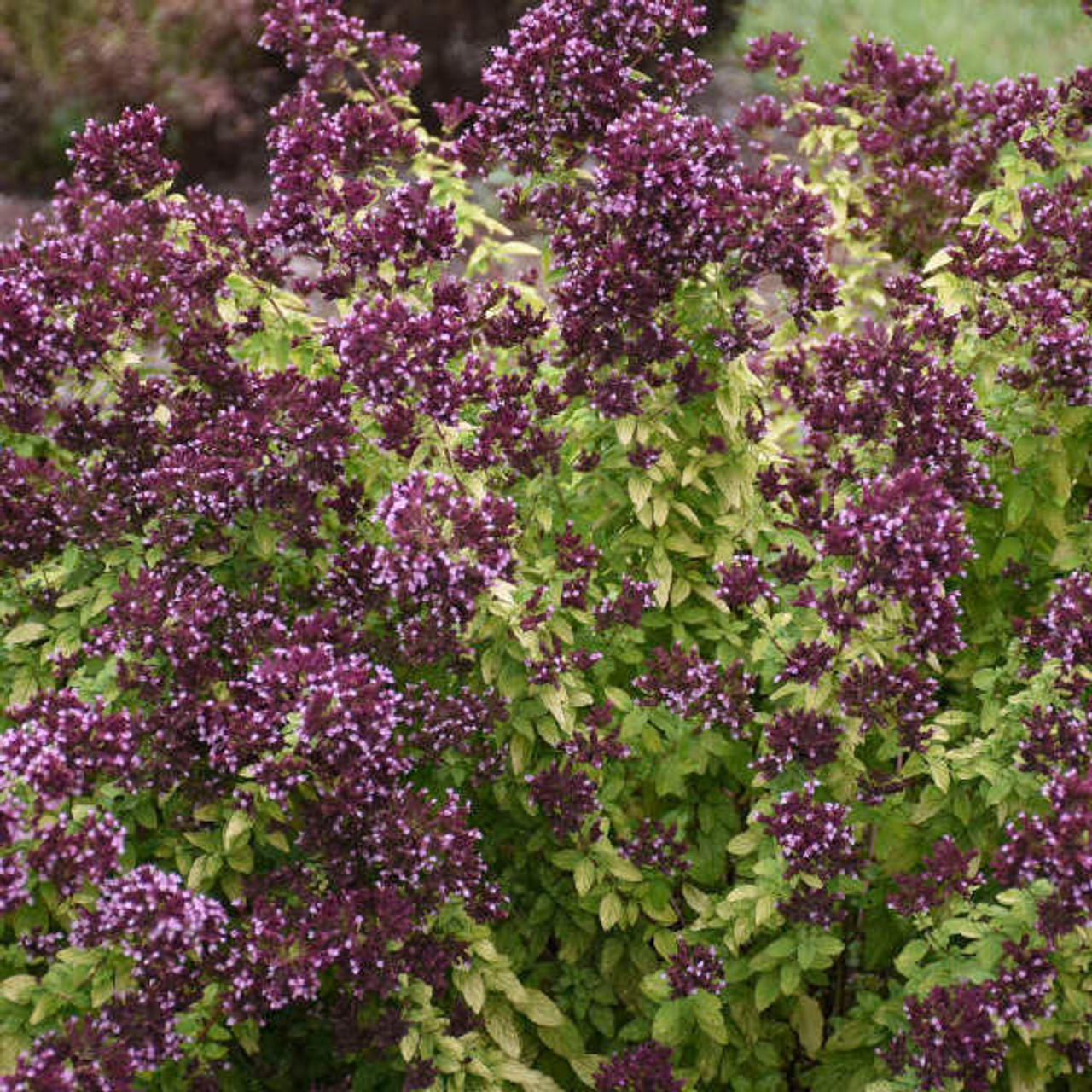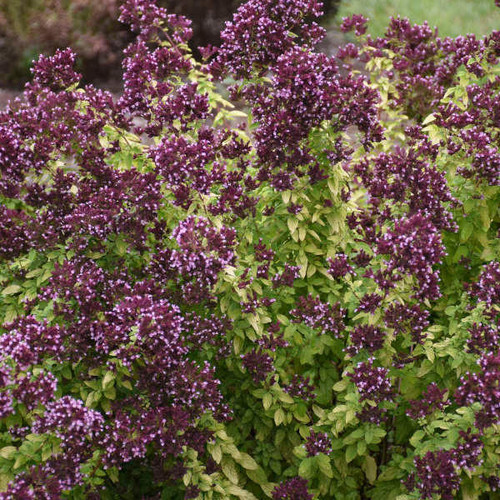Product Description
Origanum 'Drops of Jupiter' PP33367 CPBRAF - Proven Winners (4) 1-gallons
Common Name: Ornamental Oregano
This beautiful ornamental herb will brighten up your landscape! When planted in full sun, the leaves of 'Drops of Jupiter' are chartreuse yellow. Later in the summer, mauve pink flowers are held on purple calyxes. The calyxes hold after the flowers are spent and extend the attractiveness late into fall. Although it's related to the oregano commonly used in cooking, this herb is meant to show off in the garden, similar to the ornamental onion Allium 'Serendipity'. Its leaves are edible but will not have as intense of a flavor as its cousins.
Height: 24 Inches
Spread: 36 Inches
Hardiness Zones: 4,5,6,7,8,9
Flower Color: Pink shades
Foliage Color: Yellow shades
Full Sun (> 6 hrs. Direct Sun)
Average Water Needs
Poor to Average Soil Quality
Bloomtime: Midsummer to Early Fall
Attracts Butterflies
Bee Friendly
Deer Resistant
Seasonal Interest: Dried Seed Heads, Fall Color
Growth Rate: Medium
Origanum 'Drops of Jupiter' is a hybrid oregano prized for its ornamental value, offering a captivating blend of vibrant color and texture to gardens.
- Chartreuse Foliage: The bright, golden-yellow leaves of 'Drops of Jupiter' instantly brighten up any space, creating a cheerful and vibrant atmosphere. This striking foliage remains attractive throughout the growing season, providing long-lasting color.
- Showy Flowers: In mid-summer, delicate mauve-pink flowers emerge, creating a beautiful contrast against the chartreuse foliage. The flowers are not only visually appealing but also attract pollinators like bees and butterflies, adding life and movement to the garden.
- Compact Habit: Reaching a height of about 24 inches and spreading to 36 inches, 'Drops of Jupiter' maintains a neat and tidy appearance, making it suitable for various garden settings, including borders, containers, and mass plantings.
- Fragrant Foliage: Like other oregano varieties, 'Drops of Jupiter' has aromatic foliage that releases a pleasant fragrance when touched or brushed against.
- Easy Care: This oregano is remarkably low-maintenance, tolerating heat, drought, and poor soil conditions. It is also deer-resistant, making it a worry-free addition to gardens.
Growing Conditions:
- Full Sun: 'Drops of Jupiter' thrives in full sun, requiring at least six hours of direct sunlight daily to maintain its vibrant color and compact growth habit.
- Well-Drained Soil: While adaptable to various soil types, it prefers well-drained soil to prevent root rot.
- Moderate Watering: Once established, it is drought-tolerant and requires only moderate watering.
Uses:
- Ornamental: Its bright foliage and attractive flowers make it a standout plant in borders, rock gardens, and containers.
- Mass Plantings: When planted in groups, 'Drops of Jupiter' creates a stunning display of color and texture, adding depth and dimension to the landscape.
- Pollinator Gardens: The flowers attract pollinators, making it a valuable addition to pollinator-friendly gardens.
- Culinary (Limited): While the leaves are edible, they have a milder flavor compared to culinary oregano varieties.
Additional Tips:
- Deadheading: Removing spent flowers can encourage continuous blooming and maintain a tidy appearance.
- Pruning: Light pruning in spring can help shape the plant and promote bushier growth.
- Overwintering: In colder climates, a layer of mulch can help protect the roots during winter.
With its vibrant foliage, attractive flowers, and easy-care nature, Origanum 'Drops of Jupiter' is a fantastic choice for gardeners seeking a low-maintenance and eye-catching addition to their landscapes. Its versatility and resilience make it suitable for various garden styles and settings, ensuring a long-lasting and colorful display.
Border Plant, Container, Drought Tolerant, Easy To Grow, Edging, Fragrant Foliage, Attractive Foliage, Mass Planting
(4) 1-gallon containers ready to plant, plants may be trimmed for shipping,
Other Details
The most important part of the plant is its root system. Healthy roots are the foundation of a healthy, vibrant plant. The type of plug container used is based on the specific needs of the plants. Perennials offered as bare root traditionally perform better when planted as bare root.Planted in a specialized mix, potted plants have well established root systems. Top growth stage will vary depending on the current life cycle and time of year when shipped. In Winter and early Spring dormant plants may be shipped. Dormant plants may be planted right away, even before the last frost date.
Most bare root varieties are field grown for at least one season, though Hemerocallis and Hosta are grown for two seasons. The bulk of the soil is removed during the harvesting process and the tops of most varieties are trimmed back to the crown. They are graded, packed in shredded aspen or sphagnum moss and stored in freezers until ready to be shipped.
See our Container Sizes and Bare Root Perennials pages for more information.
Plant information and care is provided in the Overview section, Plant Genus Page and general information is provided in the Planting Care & Guides. Additional questions can be asked on each Plant page.
Plant Spacing: Using the maximum mature spread or width of a plant to guide spacing, ensures space to grow to full size. To fill an area sooner, plant them closer together. Just remember, future thinning or transplanting may be needed.
Water: Keep a close eye on newly planted perennials, especially throughout the first growing year. Most early plant loss is due to too much or too little water!














